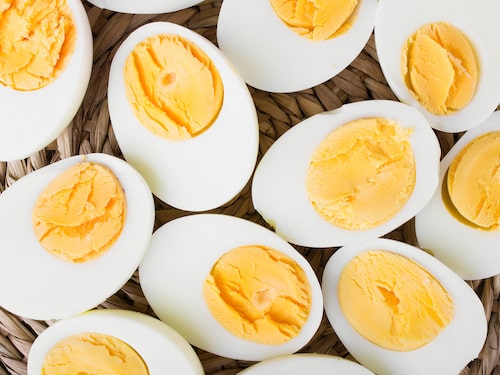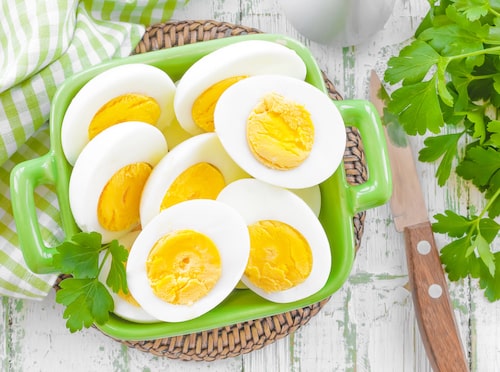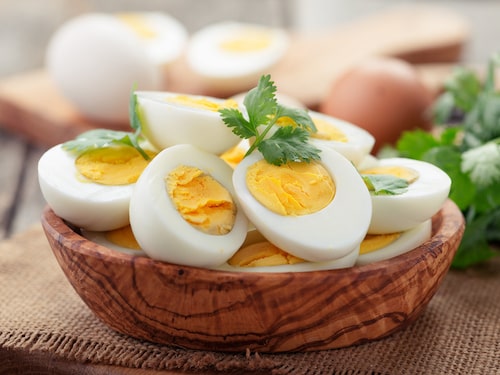The pursuit of the perfectly cooked boiled egg is a hot topic in every kitchen, whether you’re a professional chef or just preparing breakfast for your family at home. They are one of the simplest foods you can cook, but everyone has a different method for making the best soft, medium or hard boiled eggs every time.
Boiled eggs can be used in a wide range of recipes so you want to know that you’ve nailed the consistency to make a delicious meal. The oozing, yolky goodness of soft boiled eggs pairs perfectly with buttered toast soldiers for a comforting breakfast. Scotch eggs with either soft or hard yolks are the ideal finger foods for those who enjoy traditional British cuisine. And the classic taste of a Caesar salad just wouldn’t be the same without peeled boiled eggs.
You can trust the premium quality and freshness of Pace Farm free range, barn, cage and organic eggs for any egg dish you might be craving. Follow the simple method below and you’ll be able to use our farm fresh eggs to make boiled eggs exactly how you want them without a fuss.
how to cook boiled eggs

The trick to making perfectly cooked boiled eggs all comes down to the timing no matter which method you have decided to follow. Make sure you use a timer to keep it precise and avoid overcooking. Even hard boiled eggs can be left for too long which results in unappealing grey yolks and rubbery whites.
The basic steps for boiling eggs are to add them to a pot of cold water, bring it to a boil, and cook the eggs until they are the consistency you want. The last step is where many cooks will trip themselves up. Place the eggs in the pot with cold water, but wait until the water is simmering before you start the timer.
You can use the same approach to cooking either soft boiled or hard boiled eggs. The only difference is how long you leave the eggs in the pot of water. Set a timer and cook the eggs for around 4-5 minutes for soft, runny yolks and 10-12 minutes for hard boiled eggs with firm whites and light coloured yolks.
Method
- Fill a medium-sized pot with cold water from the tap. Gently lower the eggs into the pot ensuring there is enough water to cover them.
- Bring the pot to a simmer over a medium heat. You don’t need a rolling boil. A light simmer is ideal and will avoid cracking the shells.
- Start the timer and simmer the eggs for the length of time for your desired consistency.
- Once the timer goes off, use a large spoon or skimmer to remove the eggs from the water.
- Run the eggs under cold water for 60 seconds or place them in an ice water bath to cool them down and stop them from cooking.
Cooking boiled eggs can still take some trial and error to find your preferred texture. You might want soft boiled eggs, but feel that 4 minutes isn’t quite long enough for your tastes. It’s also worth remembering the other variables that can impact how long an egg needs to cook. Different types of pots could take longer to heat up. Room temperature eggs will cook much quicker than eggs taken straight from the fridge while larger eggs will need more time in the hot water.

As a general guide to boiled egg consistency:
- 4 minutes: soft white and runny yolk, perfect for dipping
- 5 minutes: soft white and slightly firmer yolk, but still oozy
- 6 minutes: softly set white and jammy, spreadable yolk
- 8 minutes: set white and yolk with hint of softness in the middle
- 10 minutes: hard boiled egg with firm white and light, fudgy yolk
- 12 minutes: hard boiled egg with firm white and light, crumbly yolk
Now that you know how to cook your perfect boiled eggs, put them to good use with one of our delicious recipes such as prawns rangoos deviled eggs, egg sandwich with dill, Hungarian casino egg salad, and faux-tato salad.
How To Peel Boiled Eggs

Cooking the perfect hard boiled eggs isn’t just about the texture. You also want your eggs to be easier to peel so you can use them in all of your favourite recipes without fumbling about removing the shell. There are countless theories for cooking easy peeling eggs so we’ve compiled a few handy tips and tricks.
Use older eggs for boiling
You might think that the freshest eggs are always best, but that isn’t the case when it comes to peeling hard boiled eggs. The fresher the egg, the more it will stick to the shell. Eggs have a small air pocket at the wide end which becomes larger the older they are. It’s also the reason why really old eggs will float in water and makes them easier to separate from the shell. You don’t want to wait until your eggs are so old that they float, but boiling eggs you’ve had for more than a week will make them much easier to peel so you can enjoy the eggy goodness.
Peel eggs under running water
If you only have fresh eggs available then that doesn’t mean you have to wait another week or so to enjoy hard boiled eggs. If you are finding the shells are stubborn then try running them under cold water before peeling. You could also submerge the egg in a bowl of cold water. Then gently tap the egg on a hard surface to crack the shell and it should loosen up so you can peel without too many bits of the egg white coming off as well.
‘Shock’ boiled eggs in ice water
There are a few ways to cool down boiled eggs when you remove them from the pot, but using an ice bath will make them easier to peel. Immediately placing boiled eggs in an ice bath will loosen the shell by “shocking” the membrane between the egg white. That should allow you to keep the boiled egg in one piece when you peel the shell off. Shocking the egg in an ice bath also stops the cooking process much faster than running tap water which means the consistency of the egg will be perfect.